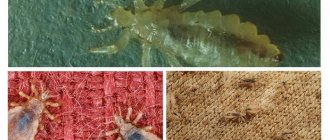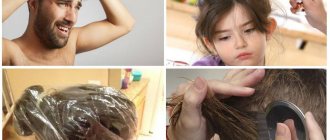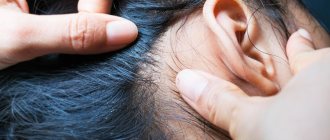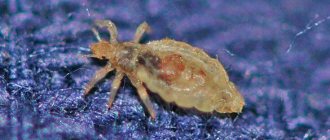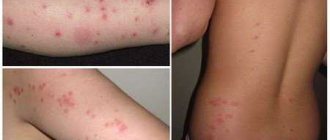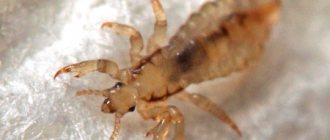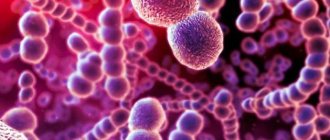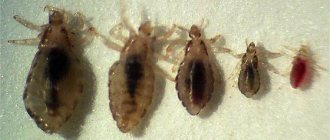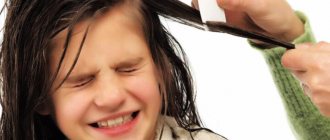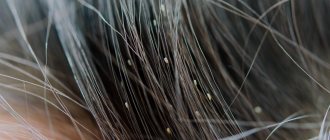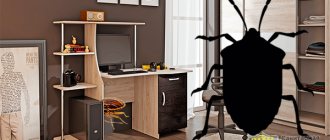How to get rid of linen lice at home? For many, discussing this topic is awkward. After all, it is generally accepted that representatives of asocial segments of the population become infected with insects. However, anyone can “catch” lice: there is no need to be ashamed of such “neighborhood”.
This parasite has been living next to humans for a long time: even Indian and Egyptian mummies have been found with dried insects. But body louse, which is sometimes called bed louse, body louse, clothing louse or linen louse, appeared relatively recently - about 100 thousand years ago. She separated from the head louse, adapting to live on the human body, more precisely, on clothes and bedding.
Characteristics of the parasite
It is almost impossible to distinguish a body louse from a head louse with the naked eye: this is an insect with a characteristically elongated abdomen measuring 3-4 mm. Its chitinous body is grayish-yellow or whitish in color, almost transparent, therefore, when drinking blood, the parasite turns brown. Linen lice look abundantly saturated, almost like fleas, but, unlike the latter, they cannot jump.
With such an obvious similarity between the two varieties, if a linen louse accidentally lands on your head, it will not stay there for long. This is because the insect's legs are not designed to climb hair and lay eggs.
"Shelter" and food
The bed louse feeds on human blood. It feeds every three to four hours, but the insect does not need to constantly be on the body of the “owner”. Therefore, the parasite spends most of its life in the folds, seams and lint of clothing. Lice feel more comfortable in linen and cotton products. They avoid satin and silk: there is nothing to cling to.
The adaptability of parasites is amazing: pests almost never settle on woolen products, since people rarely wear such things on their naked bodies.
Life cycle
The lifespan of a male is a little less than a month, a female is about 45 days. During this time, she manages to lay approximately 100-140 nits (about four eggs per day). The life cycle of an insect can be roughly divided into five stages.
- Egg. The rudiment of a louse, covered with a special sticky substrate, is called a nit. This formation is attached to the fibers of clothing so firmly that it is problematic to remove it mechanically.
- Larva. After three days, a larva emerges from the nit, which outwardly looks like a small adult.
- Nymph of the first instar. The insect drinks blood, after which it immediately molts, changing its chitinous body - now it is a first-instar nymph.
- Nymph of the second age. After five days, the next molt occurs, and the parasite becomes a second instar nymph.
- Adult. After another eight days, the third molt occurs, after which the louse becomes a sexually mature organism capable of reproducing.
The body louse travels from an egg to a sexually mature insect in 16 days under favorable conditions.
Harm
The body louse is a carrier of dangerous diseases: typhus (relapsing and typhus), Volyn fever. During the war, typhus, spread by pests, claimed thousands of lives. In the modern world, the likelihood of such infection is low. The main “trouble” caused by the parasite to humans is the bites of linen lice, the consequences of which are:
- unpleasant sensations - burning, itching;
- danger of infection - through the wound it is easier for pathogenic microorganisms to enter the blood;
- dermatological lesions - in advanced cases, scabs, suppurations, and pyoderma appear on the skin.
- when using someone else's bed linen and clothing;
- in a store fitting room;
- in places where large numbers of people gather;
- in kindergartens and schools.
On a social level, a person infested with lice also experiences inconvenience, feeling discomfort when interacting with other people. The dermatological symptoms that result from a lice infestation are called body lice.
Where do they come from?
A body louse cannot live without food for more than five to seven days, so if you do not wear clothes that have been “occupied” by insects for at least a week, the adult louse will die. Therefore, by and large, the “carriers” of parasites are representatives of asocial groups and people who neglect the rules of personal hygiene.
However, anyone can accidentally “catch” lice. Infection occurs only through close contact with the tissues on which the parasites live: they cannot fly or jump. The risk group consists of volunteers, medical and social workers, people who come into contact with representatives of antisocial segments of the population. Where else do linen lice come from? You can catch the pest:
Linen lice can be detected by two signs: the presence of bites on the body and the presence of the parasites themselves in clothing and bedding.
Linen lice have several development cycles:
Nits (the egg in which the louse develops) The size of a nit is 1.5 mm, it is difficult to see, even if there is a whole cluster of them. The nit has a translucent body that can attach to the surface.
Nymph (larva). Emerges from the nit after 7 days.
Adult. Appears after 7-10 days from the nymph. A louse lives on average about 40 days. For a comfortable life, the parasite needs high humidity, a hot microclimate and the prey necessary for feeding on blood.
How to get rid of linen lice
It is easier to remove linen lice than head lice, since they do not live directly on the human body. The first thing you need to do is take a hot shower, preferably using laundry or tar soap, this will help get rid of the pests that have moved onto the body to “lunch”. Then you can begin to fight the remaining parasites, guided by three principles.
- Speed. Were you able to recognize the lice? We need to start eliminating them as soon as possible to prevent the population from increasing.
- Scale. Treat not only those items on which parasites were found, but also all clothing, bed linen, towels, curtains, and furniture. Wash hard surfaces with a strong solution of laundry soap, soda or vinegar.
- Medicines. A doctor will help you cure vinegars. Typically, the patient is prescribed external use of antiseptic drugs in the form of creams and ointments and oral antihistamines to prevent allergies.
To treat the body, instead of soap, you can use special anti-pediculosis shampoos: Veda-2, Medifox, NOK, Lauri. Due to toxicity, the use of such products has contraindications; it is recommended to carefully read the instructions.
Basic methods
The easiest way to get rid of insects is to wash items in hot water, rinse in a weak bite solution, dry in the sun, do not wear for a week, then wash again. Here are five more remedies for linen lice.
- Kerosene soaking. Soak things in a 20% solution of laundry soap and kerosene for half an hour. Wash in a washing machine, rinse in vinegar solution, dry in the open air.
- Boiling. If the material allows, boil linen and clothes for 15-30 minutes, and then wash in the usual way. To enhance effectiveness, add shavings of tar or laundry soap to the water.
- Freezing. Pack things in plastic bags and put them in the freezer for three days. In winter, hang products on the balcony.
- Herbal soak. Soak things for several hours in a decoction of wormwood, tansy or milkweed. To prepare the product, you need to pour boiling water over the raw material (two tablespoons per liter of water), cook for five to ten minutes, and filter.
- Suffocating "chamber". Treat products with DDT (insecticide - a product used to control insect pests) or pyrethrum powder, tie them in plastic bags and leave for several hours, wash in a washing machine, dry in the open air.
The listed means get rid of adults and larvae. High temperatures, which are detrimental to them, will help overcome nits. All items must be thoroughly ironed with a hot iron or treated with a steam generator.
Pillows, blankets, mattresses, blankets, carpets, rugs and other things that are difficult to wash should be dry cleaned.
Special means
Despite the effectiveness of kerosene soaking, one of the most popular folk remedies for parasites, the evaporation of this product in high concentrations is dangerous for humans, and the strong “aroma” is difficult to remove. Therefore, most often, modern drugs are used to get rid of bed lice at home. The method of using them is simple: you need to treat the product with the product, and then wash and dry, preferably in the sun. Judging by the reviews, the most effective treatment of products is with the following preparations:
Home treatment
If the number of parasites is high, simple cleaning with disinfectant compounds may not be enough: disinfestation of the apartment is required. You can contact special services or use one of two methods.
- Steam generator. Treat all surfaces of the house with hot steam, paying special attention to upholstered furniture, baseboards, corners and crevices.
- Insecticide. Wash the entire apartment with DDT emulsion 2%, after two hours, wash off the composition with a strong solution of laundry soap. During the “procedure”, open the windows and make sure that the rest of the household leaves the apartment. Work in closed clothing, rubber gloves and a protective mask. Instead of DDT, you can use Dichlorvos.
The active ingredient in Soviet-era Dichlorvos was dichlorvos, a toxic organophosphorus compound. Currently, such drugs are not commercially available due to their proven danger to humans. Modern products called “Dichlorvos” are available in the form of sprays and contain piperonyl butoxide, permethrin or cypermethrin as active ingredients.
Symptoms
The incubation period of the disease is 30 days, after which symptoms appear. As a rule, the first thing noticed is severe itching from the bites, which causes scratching. The bites themselves are not painful, but the protein composition of the saliva introduced under the skin provokes allergic reactions and itching. Regular damage to the skin when scratching can lead to the appearance of pustular lesions due to the colonization of pathogenic microflora.
After examining the head, a red rash and gray-bluish spots up to 1 cm in diameter are revealed - hemorrhages that occur during sucking. Eggs will certainly be noticeable on the hair closer to the roots, even if adults could not be seen. They are firmly attached to the hair and are not washed off with water.
The most severe itching is characteristic of body lice. Because of the bites, urticarial rashes and linear excoriations occur, which are localized mainly on the neck, armpits, and lower back. With prolonged infection, the scratching site thickens, becomes dense, brownish-gray, and the skin pattern appears more clearly.
Symptoms of a pubic lice infestation also include itching and scratching. Spots form at the site of the bites, which do not disappear when the skin is squeezed. The spots disappear on their own 1-2 weeks after they appear.
The female louse lays several eggs a day. An increase in the number of individuals causes more noticeable symptoms. A person becomes irritable, suffers from insomnia, nervousness due to constant anxiety and unpleasant sensations.
To prevent the parasites from returning
Fighting bed lice is more difficult than preventing their appearance. To prevent re-infestation, it is recommended to avoid visiting unsanitary places and contact with people who could potentially be carriers of pests. Here are four more tips to prevent relapse.
- “No” to other people's things. Do not use someone else's bedding or wear someone else's clothes.
- Quarantine. When purchasing a previously worn item, place the item in the freezer for several days, and then wash it with laundry soap, adding 3-5 ml of ammonia.
- Change of linen. Change your underwear daily and change other clothes as often as possible.
- Useful "flavors". Place “bouquets” of dry tansy or milkweed, or cotton pads moistened with lavender or tea tree oil, on the shelves of the cabinets. Pests cannot tolerate these odors.
Body lice, like any other insects, die in steam-formalin chambers - such devices are used for disinfection and disinfestation of clothing, which is then sold in second-hand stores. The average person can simply take their clothes to the dry cleaner. However, this method is quite expensive, so knowing how to get rid of body lice can save you a lot.
Video on the topic
Clothes lice (lice)
Preparation for disinfection
Treating an apartment for lice and nits requires careful preliminary preparation. Before carrying out the procedures, you should remove all rugs, capes, carpets, and thoroughly vacuum the floor. If there are pets, it is recommended to temporarily remove them from the premises that will be treated. You also need to take out the pots with plants.
